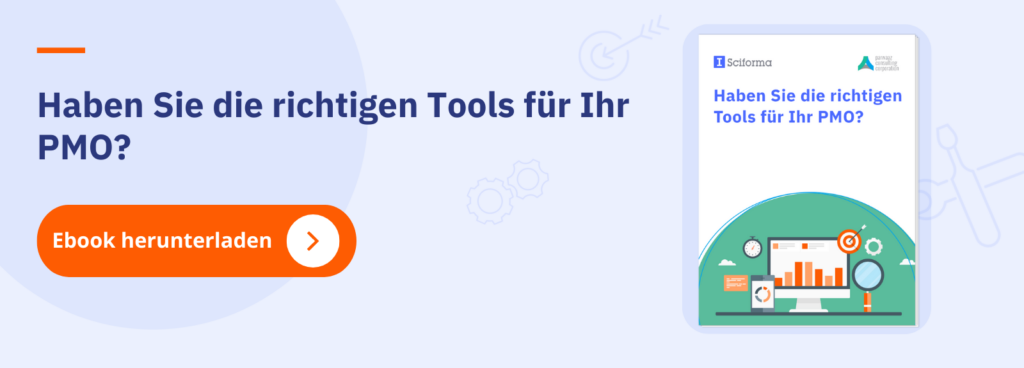- Startseite
- Blog
- Prozessoptimierung im Projektmanagement – Ballast abwerfen und Effizienz steigern
Prozessoptimierung im Projektmanagement – Ballast abwerfen und Effizienz steigern
Stundenzettel ausfüllen, Daten manuell von einer Software-Anwendung in die nächste übertragen oder online nach den richtigen Templates suchen. Aufgaben wie diese rauben unnötig viel Zeit und tragen – wenn überhaupt – nur minimal zur Wertschöpfung bei. Deshalb werden sie häufig auch Ballast genannt. Bei der Prozessoptimierung im Projektmanagement werden gerade diese Tätigkeiten allerdings häufig ignoriert. Der Fokus liegt zu oft auf der Optimierung wertschöpfender Aktivitäten. Dabei können Sie häufig viele Ressourcen freisetzen, indem Sie Ballast abwerfen und auf Lean Management setzen.
Was ist Ballast im Projektmanagement?
Unter Ballast fallen jegliche Aufgaben, die im Laufe des Projektlebenszyklus nicht zur Wertschöpfung beitragen. Dieses Konzept ist der Verschwendung in Projekten sehr ähnlich. Verschwendung stellt jedoch eine breitere Kategorie dar, die den ineffizienten Einsatz von Ressourcen in jeglicher Form umfasst. Ballast ist spezifischer und beschreibt die Aspekte, die zusätzliche Lasten oder Hindernisse für das Projekt darstellen, ohne einen Mehrwert zu generieren. Genau deshalb sollten Sie diesen bei der Prozessoptimierung im Projektmanagement nicht ignorieren.
Typische Aufgaben mit Optimierungsbedarf
- Datenverarbeitung: Erfassen und Abgleichen von Daten, Erkennung möglicher Diskrepanzen, Ursachenforschung sowie Formatierung von Daten für verschiedene Berichte und Nachverfolgung.
- Informationssuche: Suche nach Informationen wie Projektvorlagen, Metriken und Finanzdaten. Viele Unternehmen berichten, dass Projektmanager und Teammitglieder mehr als einen Tag pro Woche mit der Suche nach Informationen verbringen.
- Administration: Auch Teammitglieder, die nicht direkt in der Administration arbeiten, müssen sich häufig mit administrativen Aufgaben beschäftigen. Sie füllen etwa Stundenzettel aus oder dokumentieren ihren Fortschritt manuell. Noch ein triftiger Grund für die Prozessoptimierung im Projektmanagement.
- Datenübertragung: Dokumente hochladen, nach einer Fehlermeldung Leerzeichen und Kommata überprüfen und erneut hochladen. Daten manuell von einem System ins nächste übertragen und unterschiedliche Auswertungen abgleichen. Datenübertragung nimmt viel Zeit in Anspruch.
- Leitung und Koordination: Projekt- und Arbeitsaktivitäten zu koordinieren, ist anspruchsvoll und verlangt mit wachsenden Teams so einiges von Projektmanagern ab. Viele dieser Aktivitäten lassen sich allerdings automatisieren.
Aufwand & Einsparungspotenzial berechnen
Dabei ist natürlich zu beachten, dass Sie nicht alle dieser Aktivitäten komplett streichen können. Zeiterfassung und Dokumentation sind wichtige Aktivitäten, auch wenn sie häufig langwierig und unbeliebt sind. Am einfachsten lässt sich dieser daher als Zeiteinheit darstellen:
Ballast im Projekt = Zeitaufwand für Aufgaben ohne Mehrwert
Wenn Sie sich mit der Prozessoptimierung im Projektmanagement beschäftigen, ist eine differenzierte Betrachtung unerlässlich. Berechnen Sie also nicht nur die aufgewendete Zeit, sondern auch die möglichen Einsparungen durch die Automatisierung dieser Aufgaben.
Zeitverschwendung ist schädlich
Die meisten Project Management Offices (PMOs) oder projektbasierten Unternehmen unterschätzen den Arbeitsaufwand, der durch nicht wertschöpfende Aufgaben entsteht. Laut einer Studie der AKAD Hochschule Stuttgart wird jede dritte Bürostunde verschwendet. Eine ältere Erhebung des Fraunhofer-Instituts ergab sogar, dass bis zu 90 Prozent aller Büroarbeiten nicht wertschöpfend sind.
Ballast ist darüber hinaus eine häufige Ursache von Projektversagen. Allerdings vernachlässigen ihn viele Unternehmen und konzentrieren sich bei der Prozessoptimierung im Projektmanagement ausschließlich auf wertschöpfende Aktivitäten wie Ressourcenmanagement, Portfolioplanung und Risikobewertung. Dadurch bleiben nicht wertschöpfende Aktivitäten unverändert und die Ressourcen können nicht freigelegt werden.
Prozessoptimierung im Projektmanagement durchführen
Durch gezielte Prozessoptimierung im Projektmanagement, die auch nicht-wertschöpfende-Aktivitäten einbezieht, schaffen Projektmanager mehr Kapazitäten für wertschöpfende Aufgaben. Die Reduzierung zeitraubender Aufgaben durch Prozessoptimierung ist entsprechend essenziell für die Effizienzsteigerung der Projekte und des gesamten Portfoliomanagements.
Die Prozessoptimierung im Projektmanagement führt letztendlich zu geringerer Zeitverschwendung durch unnötige oder überflüssige Aufgaben und Prozesse. Das beschleunigt den Projektfortschritt, legt wertvolle Ressourcen frei und lenkt die Aufmerksamkeit auf die eigentlichen Ziele. Ballast abwerfen und Verschwendung vermeiden, lohnt sich dementsprechend.
Mit intelligenter Prozessoptimierung im Projektmanagement können Sie ineffiziente Elemente identifizieren und eliminieren. Im Idealfall verschlanken Sie so Prozesse und führen Ihre Projekte kosteneffizienter durch. Damit steigern Sie nicht nur die Produktivität des Teams, sondern verbessern auch die Zufriedenheit der Stakeholder, indem Sie Ressourcen effektiver einsetzen und Projektziele schneller erreichen. Kurz gesagt, weniger Ballast durch Prozessoptimierung im Projektmanagement ebnet den Weg zu höheren Projektwerten und mehr Erfolg.
Prozesse optimieren und Ballast abwerfen
Unterschiedliche Methoden eignen sich zur Prozessoptimierung im Projektmanagement. Folgende Ansätze sind gut dazu geeignet, Ballast im Projekt effektiv zu reduzieren und die Effizienz zu steigern.Lean Management
Lean Management ist der Ballast-Killer schlechthin. Das gesamte Framework zielt darauf ab, Verschwendung zu minimieren und Wert zu maximieren. Dabei werden Prozesse identifiziert, die keinen Wert hinzufügen, und anschließend entweder eliminiert oder optimiert. Lean-Prinzipien können auf alle Aspekte eines Projekts angewendet werden, von der Planungsphase bis zur Ausführung. Dementsprechend ist Lean Management an sich bereits eine Art Prozessoptimierung im Projektmanagement.Agile Methoden
Weitere agile Frameworks wie Scrum oder Kanban fördern Flexibilität, schnelles Feedback und kontinuierliche Verbesserung. Durch regelmäßige Retrospektiven und das iterative Arbeiten in kurzen Sprints identifizieren Projektmanager oder Scrum-Master ineffiziente Prozesse mit Agilität schnell und erhalten Gelegenheit, diese rechtzeitig anzupassen. Das reduziert Ballast und trägt idealerweise dazu bei, dass dieser gar nicht erst entsteht.Automatisierung
Die Automatisierung von wiederkehrenden und zeitaufwendigen Aufgaben, wie manuelle Dateneingabe, Zeiterfassung oder Berichterstattung, kann Ballast im Projekt erheblich reduzieren. Moderne Projektmanagement-Tools bieten viele Möglichkeiten zur Automatisierung und entsprechend zur Prozessoptimierung im Projektmanagement. Dabei gilt, je mehr Tools in einer Anwendung stecken, desto besser.Prozessstandardisierung
Wer sofort weiß, welches Template für die Aufgabe das richtige ist und auf einen bunten Katalog gut gepflegter Vorlagen zugreifen kann, spart Zeit. Die Entwicklung und Implementierung von standardisierten Prozessen für wiederkehrende Aufgaben sind entsprechend wirksam gegen Zeitverschwendung. Durch einheitliche Rahmen stellen Projektmanager sicher, dass Best Practices befolgt und die Zeit für die Erstellung oder Suche neuer Dokumente oder Prozesse minimiert werden.Kollaboration verbessern
Effiziente Kommunikationswege und PPM-Tools können Missverständnisse reduzieren und dazu beitragen, dass Informationen schnell und effektiv zu allen Beteiligten gelangen. Das hilft unter anderem dabei, Doppelarbeit und unnötige Meetings zu vermeiden. Außerdem können Projektmanager dadurch schneller Potenziale erkennen. Diese Methoden bieten einen Rahmen für die Prozessoptimierung im Projektmanagement und helfen beim Ballast-Abwerfen. Das führt wiederum zu einer verbesserten Projektperformance und mehr Erfolg.Mit Prozessoptimierung im Projektmanagement Ballast abwerfen
Durch die Prozessoptimierung im Projektmanagement können Sie Ballast abwerfen und die Effizienz gezielt steigern. Die Standardisierung von Prozessen, die Anpassung der Managementstile, beispielsweise hin zu Lean Management, und die Einführung intelligenter Software für Portfoliomanagement wie Sciforma sind diesbezüglich besonders vielversprechend. Mit den richtigen Werkzeugen können Sie viele Aufgaben, die sonst viel Zeit rauben, automatisieren und durch die Prozessoptimierung im Projektmanagement den gesamten Ablauf verschlanken.Mehr Informationen über Projektmanagement und neue Technologien finden Sie in unseren Blogbeiträgen:
Artikel teilen auf
Ähnliche Inhalte








